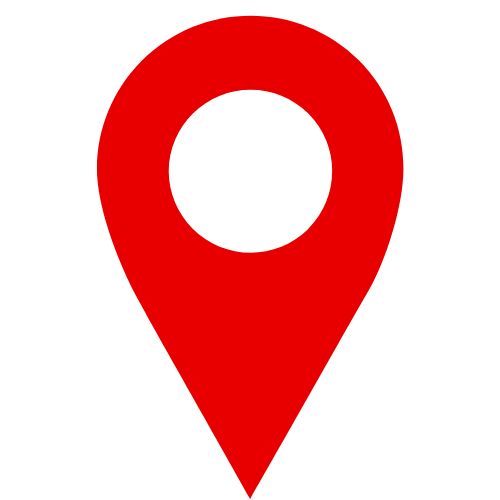What are the biggest issues in Charlotte, NC?
Charlotte, North Carolina, known as the Queen City, is one of the fastest-growing cities in the U.S., with a population of approximately 897,720 (2022). Its booming economy, vibrant culture, and Southern charm make it a magnet for newcomers. However, rapid growth brings significant challenges. From traffic gridlock to housing affordability, the problems in Charlotte, NC, are complex and interconnected. In this article, we’ll explore the biggest issues facing Charlotte today, backed by data and insights, to help residents and potential movers understand the city’s evolving landscape.
1. Traffic Congestion and Limited Public Transit
One of the most pressing Charlotte NC issues is its worsening traffic congestion, a byproduct of rapid population growth. With 50-100 people moving to Charlotte daily, roads like I-77 and I-485 are often gridlocked, especially during rush hours. The city’s infrastructure lags behind its growth, leading to commute times that rival larger cities like Los Angeles.
Why it’s a problem: Charlotte’s auto-dependent culture exacerbates congestion. The LYNX light rail serves Uptown and South End but is limited in scope, leaving many residents reliant on cars. Over 23,000 households lack car access, making mobility a challenge.
Safety concerns: Charlotte is a dangerous place for pedestrians and cyclists, with fatal crashes nearly doubling between 2012 and 2016, totaling around 900 deaths.
Proposed solutions: The city’s Vision Zero strategy and Transportation Action Plan aim to reduce crashes and promote active transit like biking and walking. Expanding public transit options, such as extending the light rail, is critical to easing congestion.
Residents often voice frustration about traffic on platforms like X, with some comparing Charlotte’s roads to California’s. Investing in robust public transportation could alleviate this growing pain point.
Image by wal_172619 from Pixabay
2. Housing Affordability and Displacement
As Charlotte’s population surges, housing affordability has become a top concern. The median home price is around $385,000, and rents in desirable areas like South End and NoDa average $1,500-$2,000 for a one-bedroom apartment. While cheaper than coastal cities, these costs strain middle- and low-income residents.
Gentrification and displacement: Rapid development in neighborhoods like Cherry, a historically African American community, has driven up rents and displaced longtime residents. Black renters face a housing burden (percentage of income spent on rent) nearly 57% higher than white residents.
Vacant land shrinking: About 18% of Charlotte’s land is vacant, but this is decreasing as developers build thousands of new apartments, making Charlotte the fastest-growing apartment market in the U.S.
Solutions in progress: The Charlotte-Mecklenburg Opportunity Task Force’s Leading on Opportunity report emphasizes affordable housing and career readiness to combat displacement. Community efforts like Pop Up Produce aim to support low-income residents with fresh food access.
Without proactive policies, the Charlotte NC growth challenges risk exacerbating inequality and pushing vulnerable residents out of the city.
Image by Pete Linforth from Pixabay
3. Economic Inequality and Social Mobility
Charlotte ranks 50th out of 50 major U.S. cities for upward mobility, a statistic that underscores its deep economic inequality. While the city’s finance, tech, and healthcare sectors thrive, opportunities are not evenly distributed, particularly across racial and income lines.
Racial disparities: White residents, who make up 50% of Charlotte’s population, hold significantly more wealth than Black residents (35% of the population). Black Americans face lower access to financial support through social networks, limiting job, education, and housing opportunities.
Social capital gaps: White men benefit from robust social networks, while Black men and Latinas have smaller, less resourceful connections, often relying on a single contact for support.
Education’s role: Charlotte-Mecklenburg Schools (CMS) are highly segregated, with 77% of Black and 80% of Hispanic students attending majority low-income schools, compared to 23% of white students. This resegregation, following the dismantling of desegregation programs in the 1990s, hinders economic mobility.
Solutions: Workforce development programs, small business grants for minority-owned businesses, and inclusive growth policies are being explored to bridge the gap.
Addressing economic inequality requires collaboration between local government, businesses, and educational institutions to create equitable pathways to prosperity.
4. Environmental Challenges from Rapid Growth
Charlotte’s growth is taking a toll on its environment, with issues like air pollution, water quality, and tree canopy loss threatening the city’s sustainability.
Air and water pollution: Heavy traffic contributes to air pollution, creating respiratory health hotspots along major corridors. Runoff and sediment from construction pollute waterways, with many NC rivers and streams listed as impaired.
Tree canopy loss: Development is reducing Charlotte’s tree canopy, critical for air quality and heat mitigation. Community initiatives, like Crescent Communities donating a tree per apartment lease, aim to counteract this.
Climate change: As a rapidly growing city, Charlotte faces pressure to adopt sustainable practices. Climate change exacerbates existing issues like poor access to healthcare in low-income areas, compounding public health challenges.
Solutions: The city is promoting car-free days, expanding recycling programs, and investing in sustainable urban planning. Continued environmental education is key to fostering community engagement.
Charlotte’s fragile environment demands urgent action to balance growth with ecological health, ensuring a livable future for residents.
5. Public Health and Healthcare Access
Rapid urbanization is straining Charlotte’s healthcare system, particularly in underserved neighborhoods.
Access disparities: Low-income and minority communities face barriers to healthcare, with limited access to pharmacies, fresh food, and preventative care. This contributes to higher rates of obesity, cardiovascular diseases, and mental health issues.
Health and wealth connection: Poor health outcomes are linked to economic immobility, as medical costs and chronic conditions hinder financial stability.
Solutions: Proposals include mobile clinics, health education campaigns, and integrating wellness programs into urban planning. Investments in recreational spaces and clean air initiatives could promote healthier lifestyles.
Improving healthcare access is essential to addressing Charlotte’s broader social and economic challenges.
Image by Darko Stojanovic from Pixabay
6. Educational Inequities
Education is a cornerstone of Charlotte’s future, but disparities in funding, segregation, and outcomes pose significant hurdles.
School segregation: CMS’s resegregation has led to stark racial and income divides, with Black and Hispanic students disproportionately in under-resourced schools.
Funding issues: North Carolina ranks 43rd in per-pupil spending and 42nd in teacher pay, limiting resources for students and staff.
Charter school concerns: Mecklenburg County has 25 charter schools, more than any other NC county, but performance varies widely, with some closing due to poor results.
Solutions: Increasing teacher pay, enforcing charter school accountability, and addressing poverty and racial gaps in student discipline are critical steps.
Educational reform is vital to breaking the cycle of poverty and boosting Charlotte’s economic mobility.
How Charlotte Is Addressing These Issues
Despite these challenges, Charlotte is taking steps toward solutions. The city’s Vision Zero strategy aims to reduce traffic fatalities, while the Leading on Opportunity report outlines plans for economic equity through education and housing initiatives. Community organizations like Pop Up Produce and university-led programs like the Gambrell Faculty Fellows are tackling food insecurity and social disparities.
Residents can get involved by:
Joining tree-planting parties or recycling programs to support environmental efforts.
Advocating for public transit expansion through city council meetings.
Supporting local nonprofits focused on affordable housing and healthcare access.
Image by Shabeer Ali from Pixabay
Is Charlotte Still Worth Living In?
Despite its challenges, Charlotte remains a vibrant city with a strong economy, diverse neighborhoods, and a commitment to improvement. The problems in Charlotte, NC, are significant but not insurmountable. By addressing traffic, housing, inequality, environmental concerns, health, and education, the city can pave the way for a more equitable and sustainable future.
If you're considering buying or selling in the Charlotte area, our video on the 10 Best Suburbs in Charlotte, North Carolina offers valuable insights into the region’s most desirable communities.
Would you like to explore some other fantastic neighborhoods in the Charlotte area? Check out our Neightborhood Guide.
Let’s Connect Today!

Phone:
704-631-3977

Email:
info@thefinigangroup.com

Visit Us:
3440 Toringdon Way, ste 205
Charlotte NC 28277
 (704) 631-3977
(704) 631-3977
 info@thefinigangroup.com
info@thefinigangroup.com











